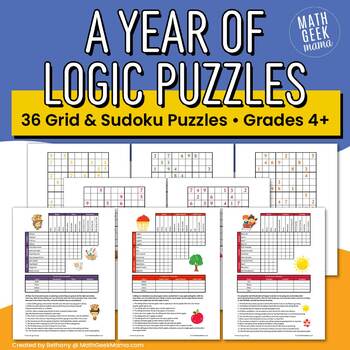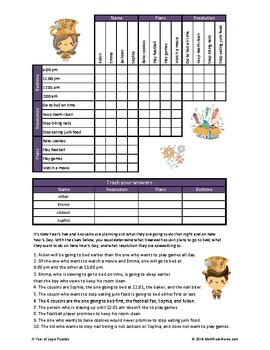A Year of Logic Puzzles for Kids - Grid Puzzles & Sudoku Puzzles - PRINTABLE
- PDF
What educators are saying
Description
Does your curriculum include brain teasers and logical reasoning challenges? These fun puzzles are a great supplement that you can incorporate all year long.
What's Included:
This set of logic puzzles includes themed puzzles for each month of the year. For each theme there is 1 grid logic puzzle and 2 sudoku puzzles for a total of 36 puzzles.
The puzzles are not labeled by month, though, so you can use them anytime of the year. The themes included are:
- New Year's
- Valentine's Day (***Click "Preview" to see this grid puzzle!***)
- Pi Day
- Earth Day
- Spring
- Camping
- Summer
- Back to School
- Apples
- Pumpkins
- Autumn
- Winter
Also included is a complete set of solutions, making this easy and low prep for you.
Ideas for when to use the logic puzzles:
- In your substitute plans
- For early finishers
- As extra credit
- A monthly competition for students
- Half days or near holidays when you have a little extra time
Typically these puzzles can be completed by kids ages 9 and up, but some younger kids may be able to solve them as well, especially if they have help or work together in small groups.
For younger kids, you may like these hands on logic puzzles:
>>>HANDS ON LOGIC PUZZLES WITH PATTERN BLOCKS
**Please Note: This is a pdf download which you can download and save after checkout. No physical product will be shipped to you. In addition, this is designed for personal use in the home or classroom only. You may not share, distribute or alter this resource in any way. Thank you for your honesty!**





